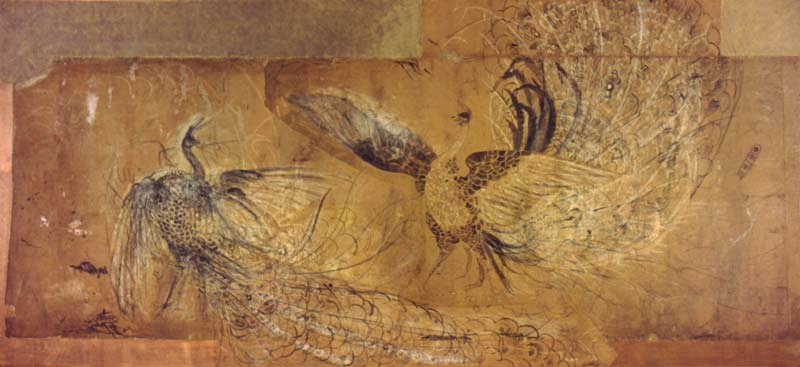Home > Catalogue > Browse > Cartoon of rich and poor Peacocks << >>
The Cartoon of rich and poor Peacocks dates from November 1876.
It seems likely that Whistler designed and painted it after his first quarrel with Frederick Richards Leyland (1832-1892), and when he realised that there was no question of Leyland getting the painting originally conceived for the wall at the south end of the dining room at 49 Prince's Gate.
Journals like The Queen described the completed panel as representing 'two life-size replicas in gold of peacocks fighting'. 1 Edward William Godwin (1833-1886) may have been reflecting Whistler's views when he wrote that it represented 'less a fight between the gold peacocks, as described in some journals, than a defiance.' 2
Although there are numerous pentimenti in the cartoon, it does not appear that there was any radical alteration to the design of the rich peacock, as Algernon Graves (1845-1922) suggested. 3 It was always intended to represent wealth and everything that Leyland stood for. After Leyland excluded him from the house, Whistler drafted a letter to Leyland, saying 'I refer you to the Cartoon opposite you at dinner, known to all London as "l'Art et l'Argent" or the Story of the Room.' 4
The drawing is fully catalogued in MacDonald 1995 (cat. rais.) [more] (cat. no. 584).
Last updated: 7th December 2020 by Margaret






